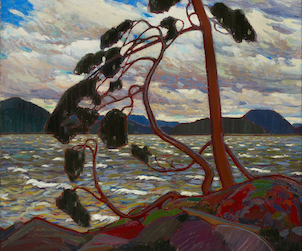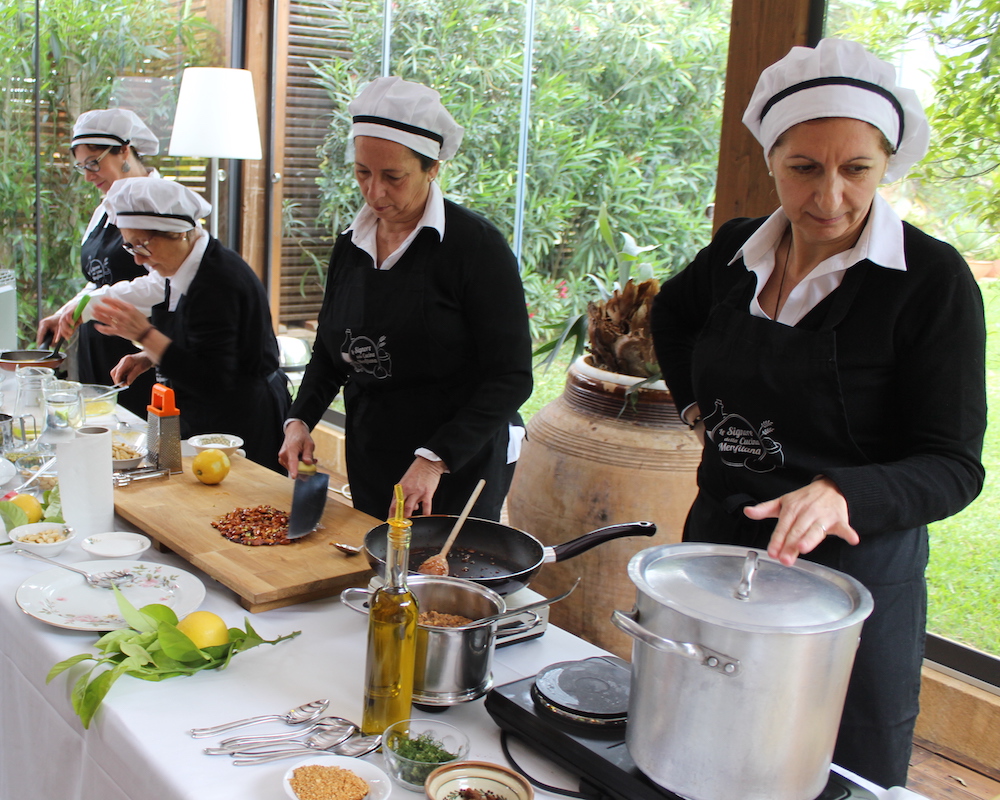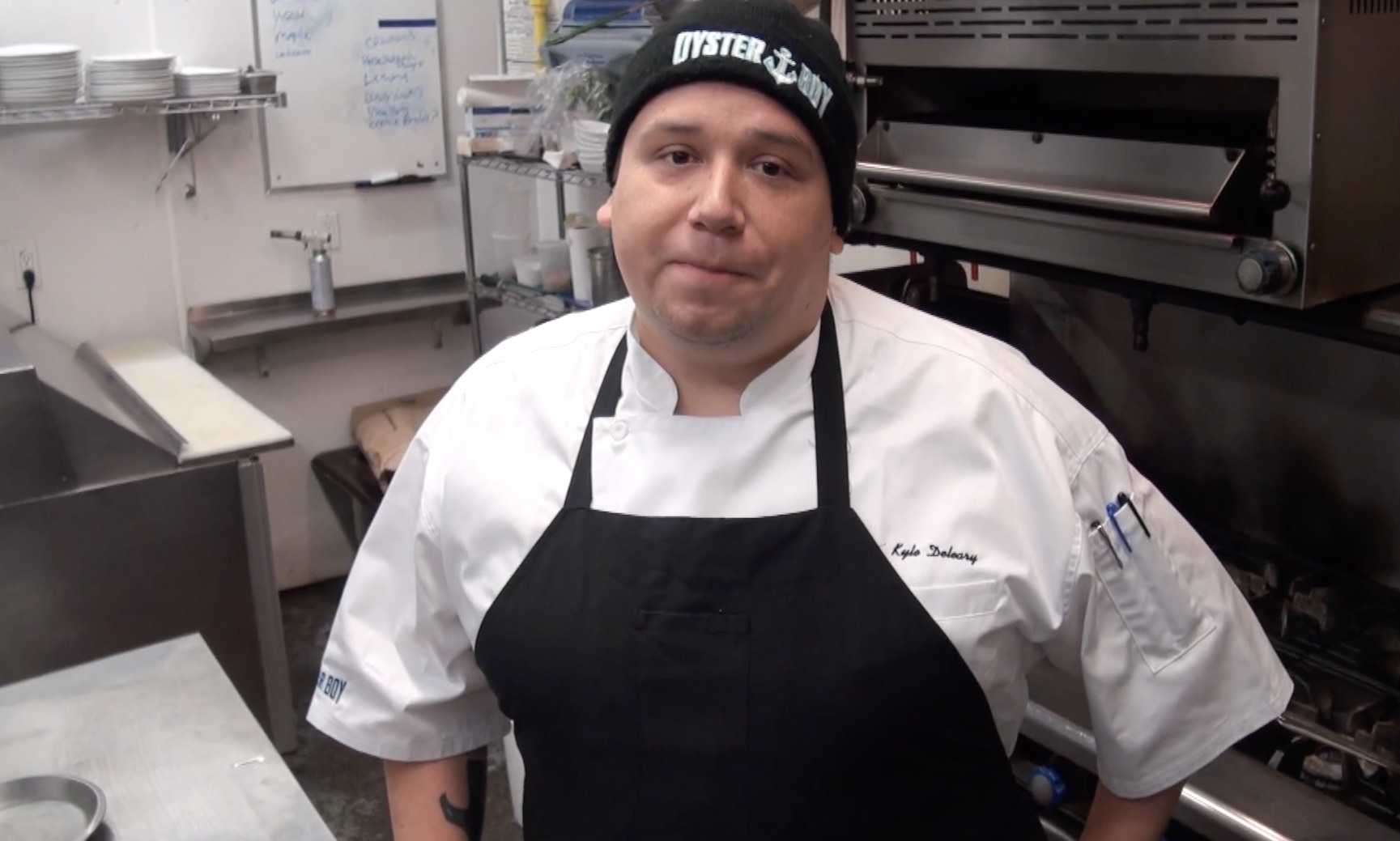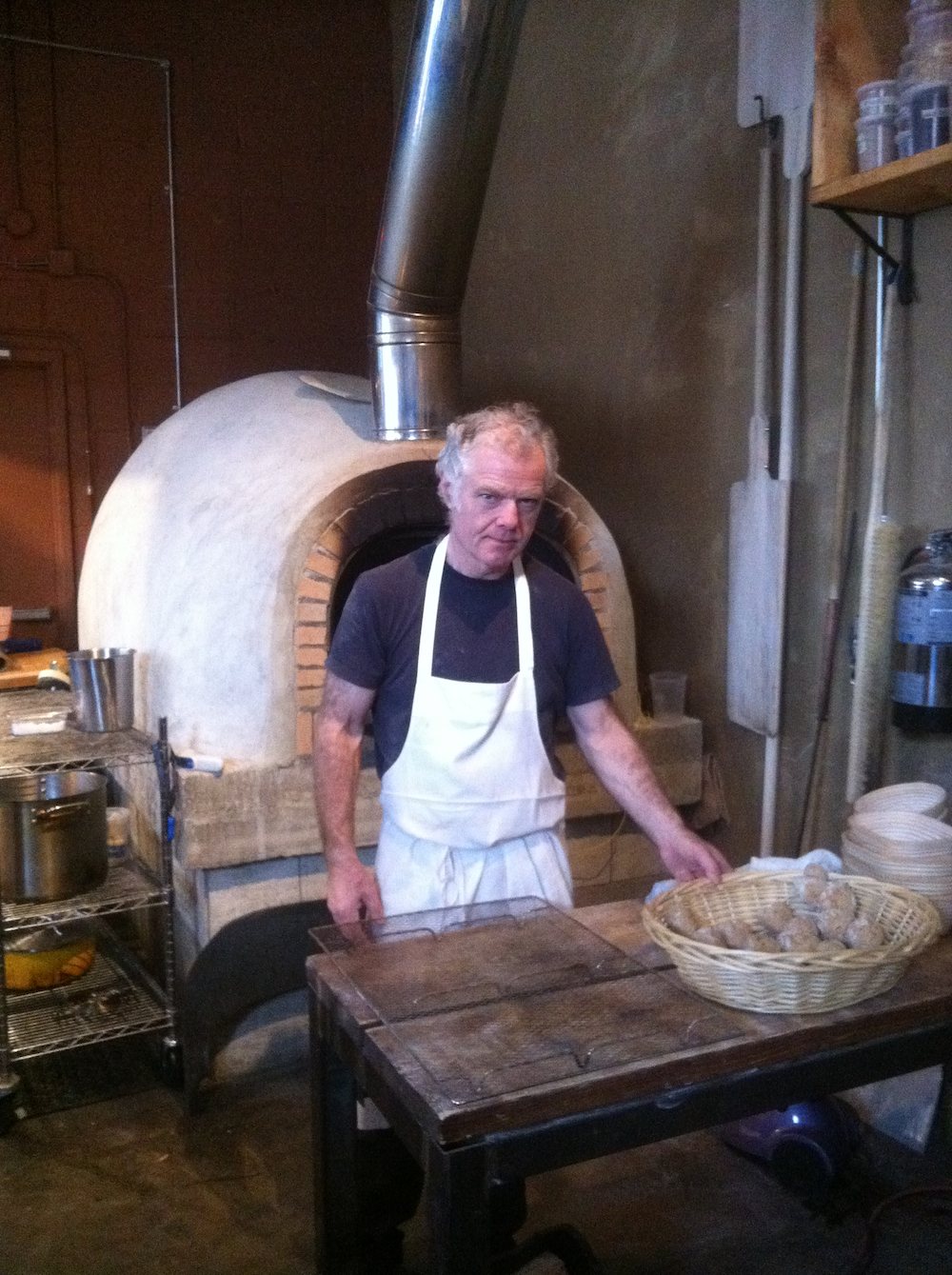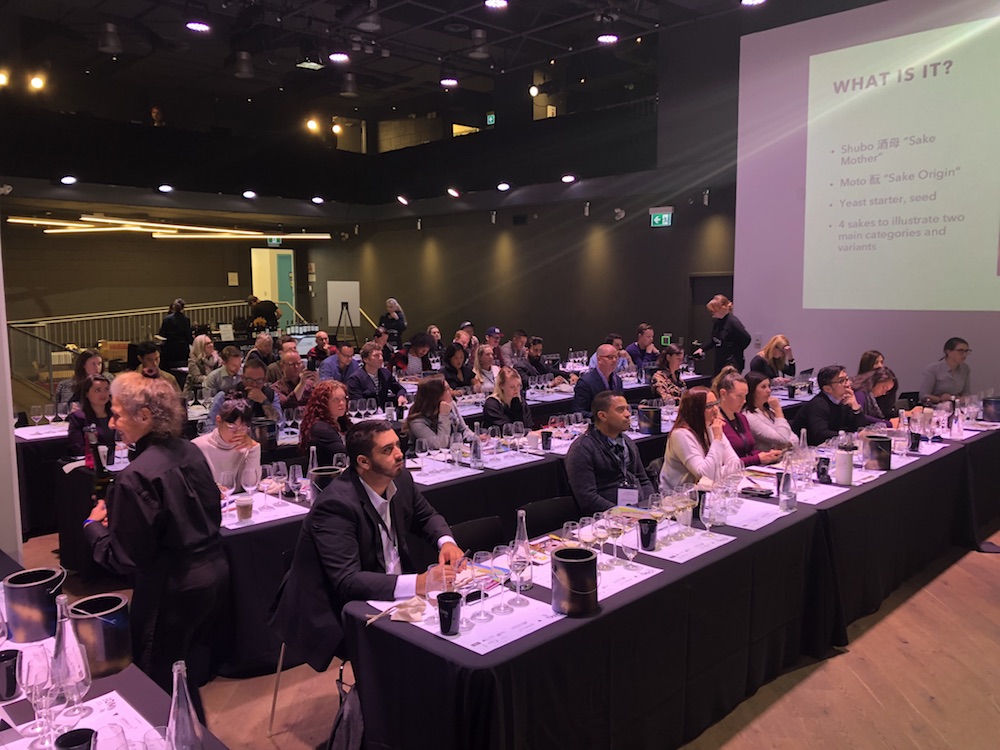Wine and Art is an ongoing GFR series on the relationship between the two creative endeavours by working artist and author Lorette C. Luzajic. 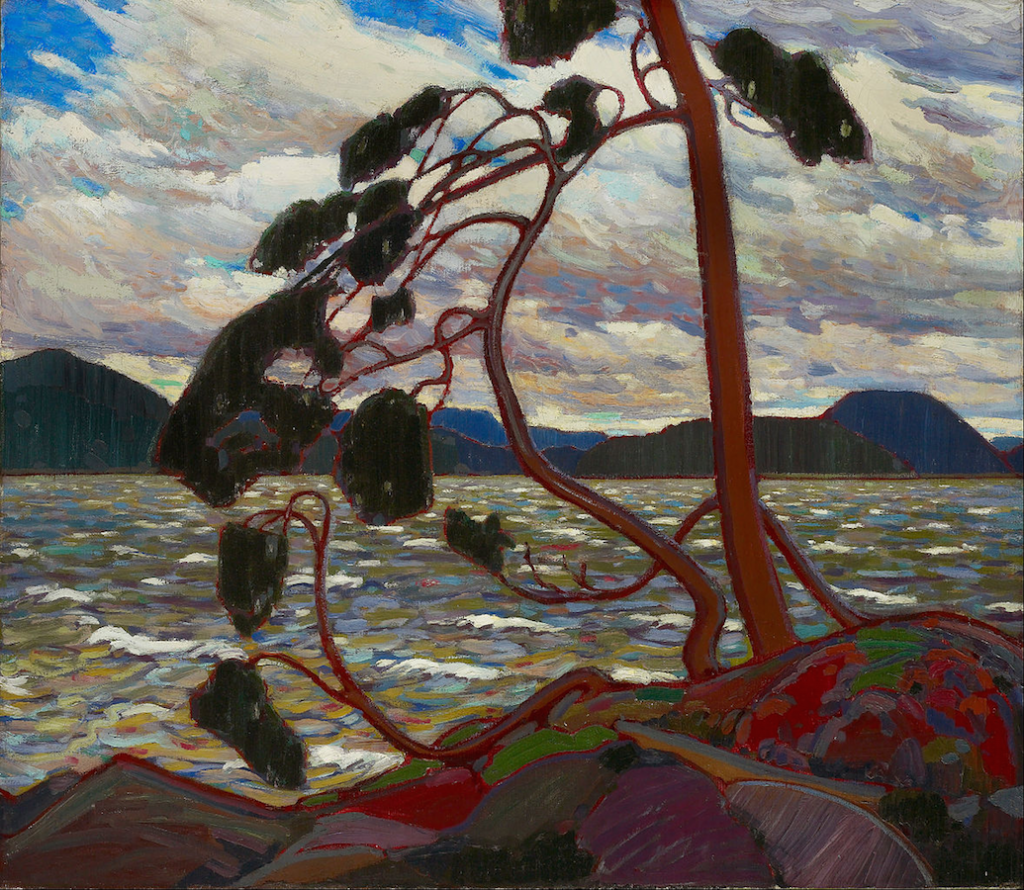 It was Saturday night at the Art Gallery of Ontario, on Labour Day weekend. In less than an hour, Canadian legends the Rheostatics would re-band to perform their album Music Inspired by the Group of Seven. Hundreds milled around in the Baillie Court sipping crisp white wine and anticipating a very special celebration. My friend and I were upstairs with Tom Thomson and the seven. Now, anytime the question has happened to arise of what I’d steal in an art heist, I never hesitated to say, the redhead. I’ve been in love with the gallery’s Augustus John, his portrait of the wild libertine Marchesa di Casati, for as long as I can remember. But on this night, it was my friend’s turn. If I could have any painting, he said, it would be this. And he pointed to a sketch-sized Tom Thomson, dense with dark red and orange, ablaze with summer’s turn to autumn.
It was Saturday night at the Art Gallery of Ontario, on Labour Day weekend. In less than an hour, Canadian legends the Rheostatics would re-band to perform their album Music Inspired by the Group of Seven. Hundreds milled around in the Baillie Court sipping crisp white wine and anticipating a very special celebration. My friend and I were upstairs with Tom Thomson and the seven. Now, anytime the question has happened to arise of what I’d steal in an art heist, I never hesitated to say, the redhead. I’ve been in love with the gallery’s Augustus John, his portrait of the wild libertine Marchesa di Casati, for as long as I can remember. But on this night, it was my friend’s turn. If I could have any painting, he said, it would be this. And he pointed to a sketch-sized Tom Thomson, dense with dark red and orange, ablaze with summer’s turn to autumn.  It was an odd moment of recognition, or connection, or something mysterious that art does to you and for you and with you that you can’t always express. My friend and I are an unlikely pair, with diverging interests and viewpoints. But those things we share are profoundly important and special to me. Art is one of them. We usually experience art differently and are seldom drawn to the same works. Now he pointed to a picture I never gave much thought to, but curiously, it was one I had kind of painted myself.
It was an odd moment of recognition, or connection, or something mysterious that art does to you and for you and with you that you can’t always express. My friend and I are an unlikely pair, with diverging interests and viewpoints. But those things we share are profoundly important and special to me. Art is one of them. We usually experience art differently and are seldom drawn to the same works. Now he pointed to a picture I never gave much thought to, but curiously, it was one I had kind of painted myself.  In my practice as an artist, I seldom make landscapes. But my collage painting was this, black, crimson, scarlet, even that splash of blue water, a work inspired by Thomson, by the Group of Seven, by Northern Ontario, and by the Rheostatics’ record we were about to hear live. Few subjects have been as integral to art history as the landscape. Even though the subject didn’t truly find prominence, or reverence, until a few centuries ago, it has commanded a great deal of attention from both painters and the market ever since. To the chagrin of artists inspired by other things, pictures of the great outdoors are consistently saleable. For this reason, we might scoff at the lack of attention paid to our misunderstood masterpieces. But the truth is, nature resonates with people at the deepest level. It nourishes us, physically and spiritually. Landscapes that are exotic are fascinating and transport us to another part of the world. Familiar landscapes represent home. For all these reasons, the Group of Seven’s artworks became the iconic backbone of Canadian painting.
In my practice as an artist, I seldom make landscapes. But my collage painting was this, black, crimson, scarlet, even that splash of blue water, a work inspired by Thomson, by the Group of Seven, by Northern Ontario, and by the Rheostatics’ record we were about to hear live. Few subjects have been as integral to art history as the landscape. Even though the subject didn’t truly find prominence, or reverence, until a few centuries ago, it has commanded a great deal of attention from both painters and the market ever since. To the chagrin of artists inspired by other things, pictures of the great outdoors are consistently saleable. For this reason, we might scoff at the lack of attention paid to our misunderstood masterpieces. But the truth is, nature resonates with people at the deepest level. It nourishes us, physically and spiritually. Landscapes that are exotic are fascinating and transport us to another part of the world. Familiar landscapes represent home. For all these reasons, the Group of Seven’s artworks became the iconic backbone of Canadian painting. 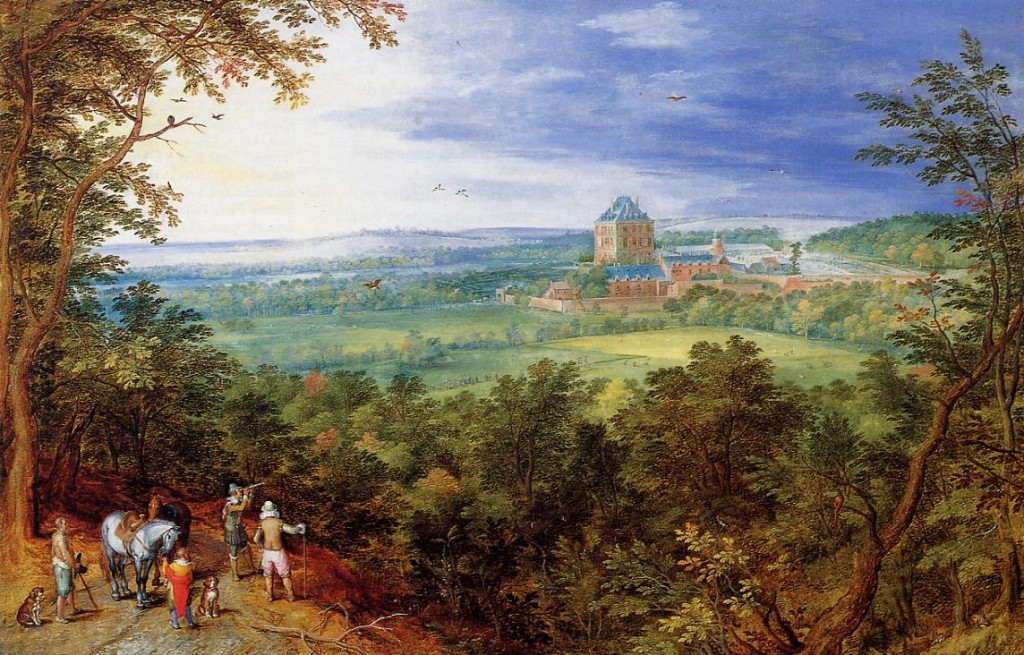 Natural scenery figured into religious, historical, and mythological paintings from the beginning, functioning as a backdrop to the focus at hand. Vistas spilling merrily from open windows or behind dancing gods or dreamy virgins made paintings complete. Following these favoured Renaissance subjects were sprawling, almost aerial topographies, with tiny people and houses that were no longer the focal points of the paintings. The landscape and the still life emerged after the Reformation in Europe, in the Netherlands and anywhere Protestants rejected religious iconography. Scenic paintings were popular, but didn’t gain much in way of respect from the academies or the elite until later in the 19th century. By that time, the Romantic painters had given decades of unwavering attention to nature as sublime and worthy of awe. We cannot imagine art today without the plein air pictures of Monet and Van Gogh, without J.M.W. Turner’s stormy seas merging Romanticism with abstraction, without John Constable or Caspar David Friedrich or Lawren Harris or Emily Carr.
Natural scenery figured into religious, historical, and mythological paintings from the beginning, functioning as a backdrop to the focus at hand. Vistas spilling merrily from open windows or behind dancing gods or dreamy virgins made paintings complete. Following these favoured Renaissance subjects were sprawling, almost aerial topographies, with tiny people and houses that were no longer the focal points of the paintings. The landscape and the still life emerged after the Reformation in Europe, in the Netherlands and anywhere Protestants rejected religious iconography. Scenic paintings were popular, but didn’t gain much in way of respect from the academies or the elite until later in the 19th century. By that time, the Romantic painters had given decades of unwavering attention to nature as sublime and worthy of awe. We cannot imagine art today without the plein air pictures of Monet and Van Gogh, without J.M.W. Turner’s stormy seas merging Romanticism with abstraction, without John Constable or Caspar David Friedrich or Lawren Harris or Emily Carr. 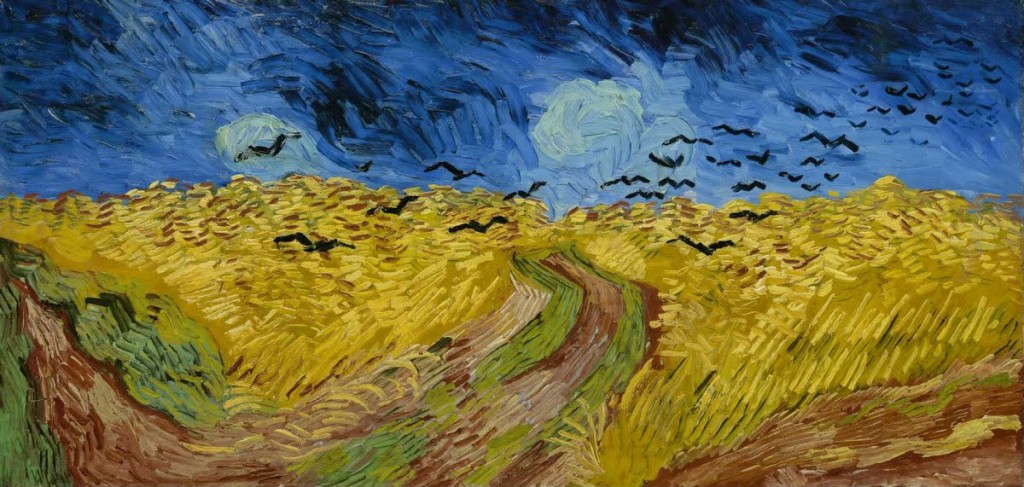 The essentiality of landscape is yet another common denominator between my twin passions, wine and art. Without nature, there would be an awful lot of half blank canvases in museums the world over, and obviously, we need soil and particular weather conditions for grapes to grow. But the landscape does more than that for wine- it provides a sense of story and history, a narrative if you will, a unique fingerprint of place and elements. “Terroir” is the word wine experts and enthusiasts use, and the concept has been analyzed from every angle, floating over tables and tinkling glasses for centuries. To say that “terroir” is controversial is itself a cliché by now. The food and wine debate over the topic goes on and on, with some saying it is science and some saying it is superstition. The latter derides the former, proclaiming that there are no magic molecules of soil in the bottle, anymore than there are molecules of Marilyn Monroe in her autograph. This team is woefully unimaginative, but also blind to science. Few believers think there are particles of Spain or Italy or Argentina in their glass- but even subtle shifts in climate and geography and weather change a recipe. And whether or not you can spot Burgundy or Tuscany in a taste test, wine still comes from its own unique place, just as do paintings and literature and food and crafts, and that place contributes to its story as much as our own personal stories of ancestry and ethnicity do.
The essentiality of landscape is yet another common denominator between my twin passions, wine and art. Without nature, there would be an awful lot of half blank canvases in museums the world over, and obviously, we need soil and particular weather conditions for grapes to grow. But the landscape does more than that for wine- it provides a sense of story and history, a narrative if you will, a unique fingerprint of place and elements. “Terroir” is the word wine experts and enthusiasts use, and the concept has been analyzed from every angle, floating over tables and tinkling glasses for centuries. To say that “terroir” is controversial is itself a cliché by now. The food and wine debate over the topic goes on and on, with some saying it is science and some saying it is superstition. The latter derides the former, proclaiming that there are no magic molecules of soil in the bottle, anymore than there are molecules of Marilyn Monroe in her autograph. This team is woefully unimaginative, but also blind to science. Few believers think there are particles of Spain or Italy or Argentina in their glass- but even subtle shifts in climate and geography and weather change a recipe. And whether or not you can spot Burgundy or Tuscany in a taste test, wine still comes from its own unique place, just as do paintings and literature and food and crafts, and that place contributes to its story as much as our own personal stories of ancestry and ethnicity do.  Michelangelo allegedly said, “I have never felt salvation in nature. I love cities above all.” I also romanticize the city, the ultimate intersection of human creativity, over nature. But I would never say never – and I’m deeply moved by mountains or moons or rivers or dandelion fluff, and especially by the landscapes of my roots, my Niagara and my north. These were my most intimate experiences of land, cottage country, where I saw Thomson’s inspirations firsthand, and the small fruit orchard on Line 6, not a half mile from the Niagara River. This is where my grandfather, a refugee from Hitler, built our house with his bare hands. This particular Tara attracted cardinals and boughs breaking under the heft of apples. The earth heaved up massive bouquets of roses. Herbs and kale and the eggplants and pumpkins and tomatoes were freakishly large. The acres of lawn on my list of chores were covered in clover, and one year, on my birthday, there were a thousand of them with four leaves. I thought I had found some kind of special fortune. My Daddy told me it a genetic mutation and I never saw it again. But some kind of magic was in that soil, and it was just a matter of time before the local French and Italian folks realized it was waiting for wine. With the rich soil and the right climate, and the roaring of the nearby Falls, and the pink and white splashes of blossoms across the countryside in spring, and the special romance of honeymoon history, Niagara was just the place to become the story of Canada’s burgeoning wine. There is nothing as gorgeous as a trip back, driving along the winding roads and vineyards between winery estates, stepping out into the late summer afternoon and tasting various incarnations of my home. For traditionalists, new wine-producing regions sometimes take a back seat to the “old world.” After all, what could a few decades of viniculture have over a few millennia? Personally, I want the whole earth covered in grapes, with new regions and new cultures taking up a future heritage born of a new sun and rain. It’s not about whether Oregon or Mexico or Ontario has a particular taste and tradition. It’s about the expansion of creativity and the inspiration and blessing that nature contributes to human hands. Wine has always been about that peculiar, enchanted intersection between what the land gives and what human ingenuity makes from it. Like landscape painting, the viticulture arts combine people’s imagination with our natural foundation, the earth and sky and trees. I’m a city girl, always have been – I confess I could hardly wait to get off our farm and move to Toronto, and I’ve been here for a quarter century. You won’t find me following my other middle-aged friends to Bobcaygeon, and my dream destinations are about metropolises, not about sun and sand. I sometimes paint or write about mountains, but I’m most inspired by museums and machines. Still, there is little that parallels the emotion I feel during a storm. You will always find my studio windows flung open wide during dark downfalls. The noise is glorious and fuels some of the chaos in my best abstracts. Just as often, spring means twilight and white wine and a barefoot walk through the forget-me-not covered lawns of Niagara. And sometimes, for real or in dreams, I am up north, outside, between the edge of the water and the forest and rocks in a canoe. I’m sketching, writing, making notes, feeling the mouthfeel of a mouthful of merlot while I work. The stories of the textures and colours and shapes of the leaves and the clouds and the rapids stir the soul. Even when it’s just a dream, I can feel the west wind on my face.
Michelangelo allegedly said, “I have never felt salvation in nature. I love cities above all.” I also romanticize the city, the ultimate intersection of human creativity, over nature. But I would never say never – and I’m deeply moved by mountains or moons or rivers or dandelion fluff, and especially by the landscapes of my roots, my Niagara and my north. These were my most intimate experiences of land, cottage country, where I saw Thomson’s inspirations firsthand, and the small fruit orchard on Line 6, not a half mile from the Niagara River. This is where my grandfather, a refugee from Hitler, built our house with his bare hands. This particular Tara attracted cardinals and boughs breaking under the heft of apples. The earth heaved up massive bouquets of roses. Herbs and kale and the eggplants and pumpkins and tomatoes were freakishly large. The acres of lawn on my list of chores were covered in clover, and one year, on my birthday, there were a thousand of them with four leaves. I thought I had found some kind of special fortune. My Daddy told me it a genetic mutation and I never saw it again. But some kind of magic was in that soil, and it was just a matter of time before the local French and Italian folks realized it was waiting for wine. With the rich soil and the right climate, and the roaring of the nearby Falls, and the pink and white splashes of blossoms across the countryside in spring, and the special romance of honeymoon history, Niagara was just the place to become the story of Canada’s burgeoning wine. There is nothing as gorgeous as a trip back, driving along the winding roads and vineyards between winery estates, stepping out into the late summer afternoon and tasting various incarnations of my home. For traditionalists, new wine-producing regions sometimes take a back seat to the “old world.” After all, what could a few decades of viniculture have over a few millennia? Personally, I want the whole earth covered in grapes, with new regions and new cultures taking up a future heritage born of a new sun and rain. It’s not about whether Oregon or Mexico or Ontario has a particular taste and tradition. It’s about the expansion of creativity and the inspiration and blessing that nature contributes to human hands. Wine has always been about that peculiar, enchanted intersection between what the land gives and what human ingenuity makes from it. Like landscape painting, the viticulture arts combine people’s imagination with our natural foundation, the earth and sky and trees. I’m a city girl, always have been – I confess I could hardly wait to get off our farm and move to Toronto, and I’ve been here for a quarter century. You won’t find me following my other middle-aged friends to Bobcaygeon, and my dream destinations are about metropolises, not about sun and sand. I sometimes paint or write about mountains, but I’m most inspired by museums and machines. Still, there is little that parallels the emotion I feel during a storm. You will always find my studio windows flung open wide during dark downfalls. The noise is glorious and fuels some of the chaos in my best abstracts. Just as often, spring means twilight and white wine and a barefoot walk through the forget-me-not covered lawns of Niagara. And sometimes, for real or in dreams, I am up north, outside, between the edge of the water and the forest and rocks in a canoe. I’m sketching, writing, making notes, feeling the mouthfeel of a mouthful of merlot while I work. The stories of the textures and colours and shapes of the leaves and the clouds and the rapids stir the soul. Even when it’s just a dream, I can feel the west wind on my face. 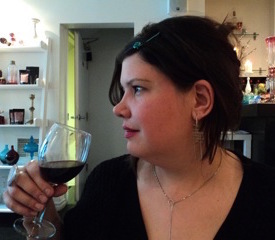 Lorette C. Luzajic is a Toronto writer and artist. Her collage-centred paintings use mixed media to explore ideas from art, literature, history and culture, always fascinated by the intersection of human creativities. Exhibition of her work is ongoing throughout Toronto, including such venues as the Spoke Club, the Royal Ontario Museum, the Flying Pony Gallery, Toronto Outdoor Art Exhibition, and the Artist Project, and it has been shown in Belfast, Brisbane, Los Angeles, Edinburgh, and beyond. In addition to occasionally writing about her other passions, food and wine, she is the author of more than ten books of poetry, short fiction, and essays, including Funny Stories About Depression, Fascinating Artists, and Kilodney Does Shakespeare. She is the editor of the new online journal, Ekphrastic. Visit her at mixedupmedia.ca. Photo by Ralph Martin.
Lorette C. Luzajic is a Toronto writer and artist. Her collage-centred paintings use mixed media to explore ideas from art, literature, history and culture, always fascinated by the intersection of human creativities. Exhibition of her work is ongoing throughout Toronto, including such venues as the Spoke Club, the Royal Ontario Museum, the Flying Pony Gallery, Toronto Outdoor Art Exhibition, and the Artist Project, and it has been shown in Belfast, Brisbane, Los Angeles, Edinburgh, and beyond. In addition to occasionally writing about her other passions, food and wine, she is the author of more than ten books of poetry, short fiction, and essays, including Funny Stories About Depression, Fascinating Artists, and Kilodney Does Shakespeare. She is the editor of the new online journal, Ekphrastic. Visit her at mixedupmedia.ca. Photo by Ralph Martin.
The Landscape in Wine and Art
